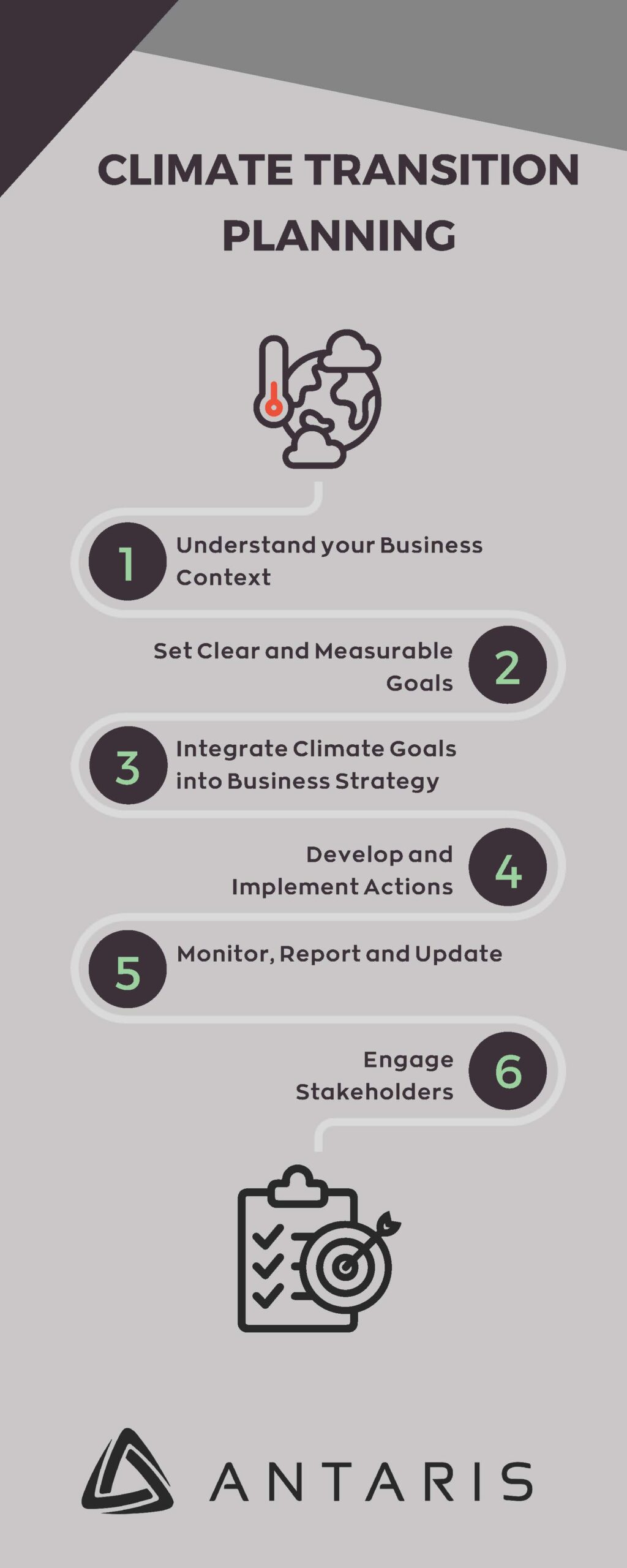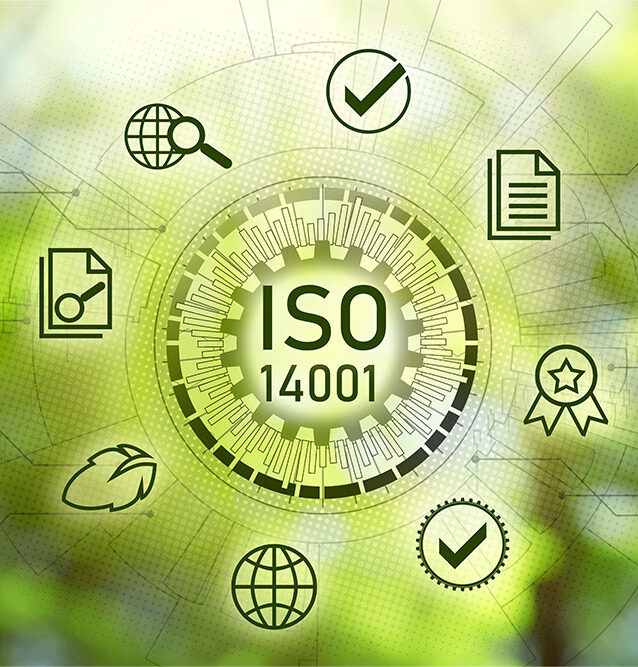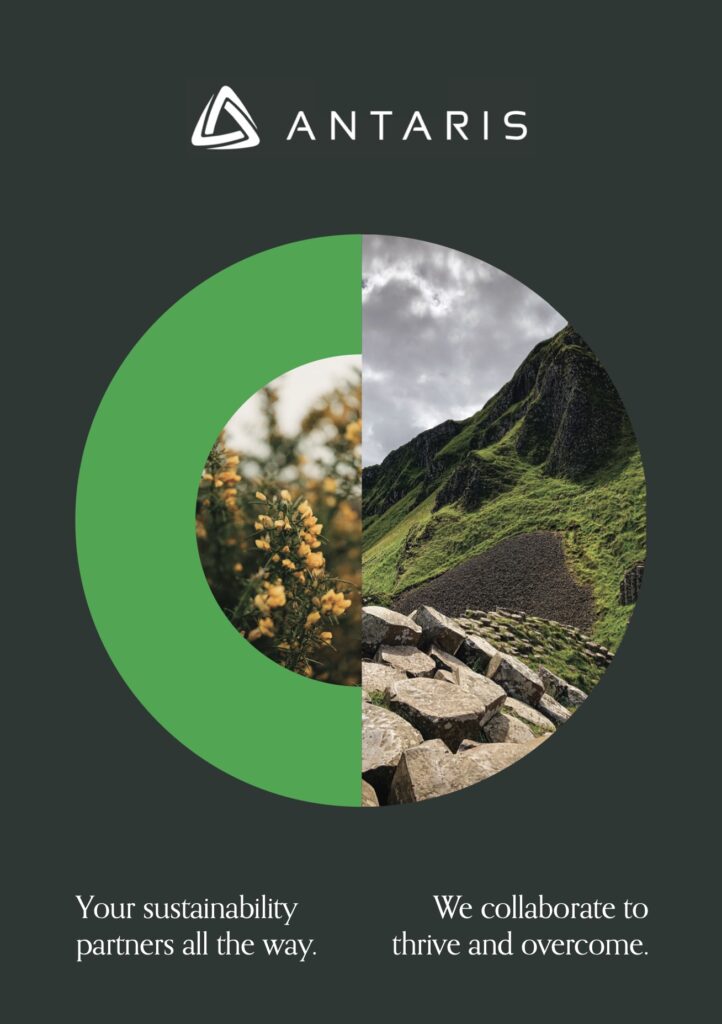Guide for Climate Transition Planning: roadmap for a climate-resilient business
What is a Climate Transition Plan?
European businesses are increasingly required to develop and disclose climate transition plans—strategic frameworks outlining how they will align operations with climate goals, such as the Paris Agreement’s target to limit global warming to 1.5°C. These plans typically include setting science-based, time-bound targets for reducing greenhouse gas (GHG) emissions across Scopes 1, 2, and 3, and integrating these targets into the company’s overall business strategy.
These plans are a critical condition of the published climate disclosure requirements, such as:
- the EU Corporate Sustainability Reporting Standard (CSRD) climate disclosure standard European Sustainability Reporting Standards (ESRS) E1,
- the International Financial Reporting Standards (IFRS) S2 standard
- CDP’s scoring methodology
Step-by-Step Guide for Climate Transition Planning
Addressing climate transition planning as an organisation involves creating a structured, actionable roadmap to align operations, policies, and strategies with global climate goals. This process includes assessing risks, setting measurable targets, and engaging stakeholders while ensuring compliance with regulatory requirements.

1.Understand Your Organisation’s Climate Impact
- Conduct a Baseline Assessment:
- Measure your greenhouse gas (GHG) emissions across Scopes 1, 2, and 3.
- Identify energy consumption, resource use, waste generation, and other environmental impacts.
- Evaluate Climate Risks:
- Assess physical risks (e.g., extreme weather, rising temperatures) and transitional risks (e.g., policy changes, market shifts).
- Map Your Value Chain:
- Analyse emissions and climate dependencies in upstream and downstream activities.
2.Set Clear and Measurable Goals
- Align with Global Standards:
-
- Use frameworks like the Science-Based Targets Initiative (SBTi) or the United Nations Sustainable Development Goals (SDGs).
- Define Key Objectives:
-
- Set targets for carbon neutrality, energy efficiency, and resource optimisation.
-
- Examples:
-
-
- Achieve net-zero emissions by 2050.
-
-
-
- Reduce energy use by 30% in the next 5 years.
-
- Break Down Goals:
-
- Establish short-, medium-, and long-term targets with specific timelines.
3.Integrate Climate Goals into Business Strategy
- Leadership Commitment:
-
- Ensure buy-in from executives and board members.
-
- Establish a cross-functional team or designate a Chief Sustainability Officer (CSO).
- Embed Sustainability in Core Operations:
-
- Incorporate climate objectives into R&D, procurement, production, and marketing strategies.
- Financial Alignment:
-
- Allocate budgets for renewable energy, efficiency upgrades, and other sustainability initiatives.
4.Develop and Implement Actions
- Energy Transition:
- Switch to renewable energy sources.
- Optimise energy use through efficiency measures.
- Operational Adjustments:
-
- Redesign products and processes to reduce emissions.
-
- Use sustainable materials and circular economy practices.
- Collaboration:
-
- Engage with suppliers and customers to reduce value-chain emissions.
5.Monitor, Report, and Update
- Track Progress:
-
- Use key performance indicators (KPIs) to measure emissions reductions and other milestones.
- Report Transparently:
-
- Publish regular updates through sustainability reports, adhering to frameworks like the Global Reporting Initiative (GRI) or Task Force on Climate-related Financial Disclosures (TCFD).
- Adapt and Improve:
-
- Reassess goals and strategies based on progress and evolving regulations.
6.Engage Stakeholders
- Internal Engagement:
-
- Train employees on sustainability goals and practices.
-
- Foster a culture of innovation and collaboration around climate solutions.
- External Engagement:
-
- Communicate progress to investors, customers, and the public.
-
- Collaborate with industry peers, NGOs, and government initiatives.
7.Ensure Regulatory Compliance
- Understand Legal Requirements:
-
- Align with local, national, and international laws (e.g., EU Corporate Sustainability Reporting Directive).
- Mitigate Risks:
-
- Address legal and financial implications of non-compliance.
-
- Regularly review policies to meet changing regulations.
Frameworks and Tools to Consider
Frameworks:
- Paris Agreement, UN SDGs, SBTi, CDP, GHG Protocol and TCFD
Certifications:
- ISO 14001 (Environmental Management System) and ISO 50001 (Energy Management System)
Technology Platforms:
- Carbon accounting software
By systematically addressing climate transition planning, your organisation can reduce its environmental footprint, enhance resilience, and position itself as a leader in sustainability while aligning with global climate goals and regulations.








